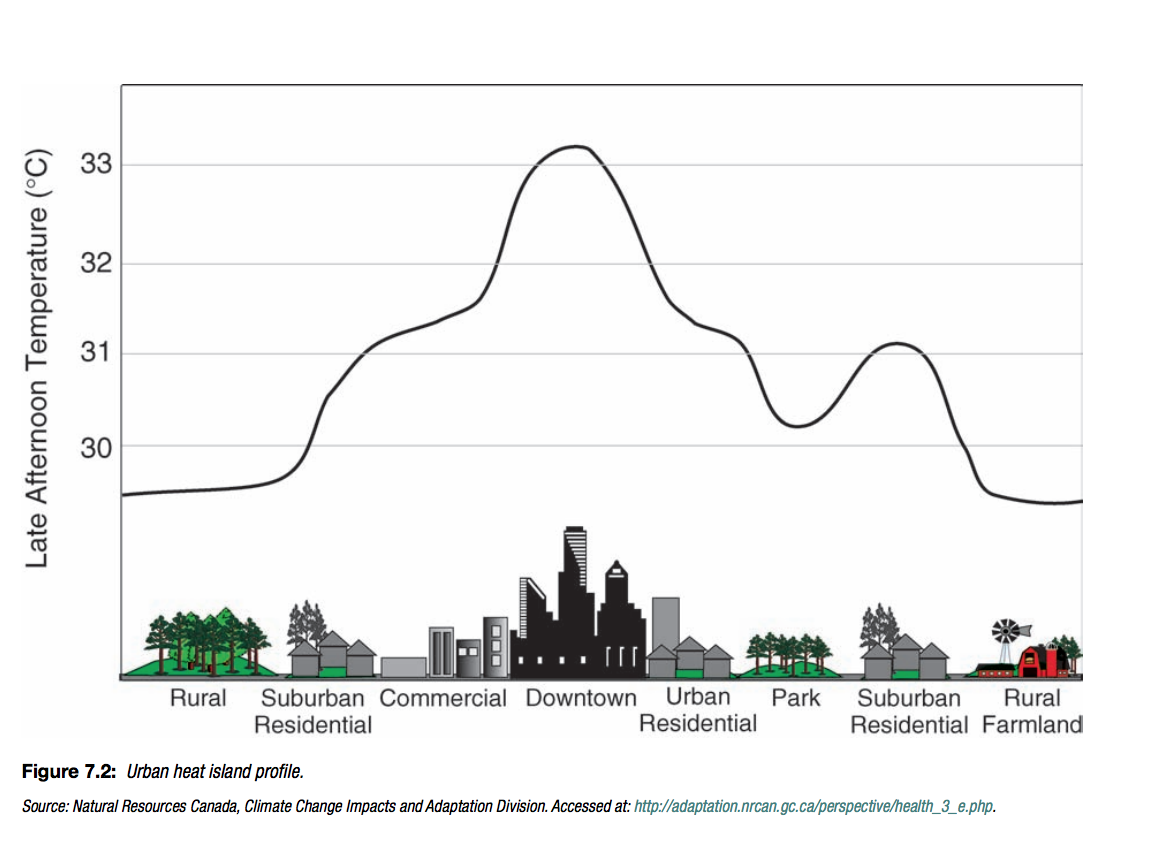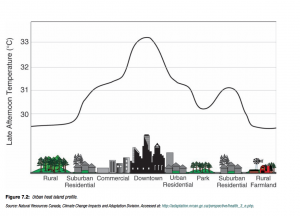Climate change is posing a very serious threat to urban energy systems today due to the fact that cities are extremely dependent on external energy resources and system assets outside the city, therefore they have high demand and rely on outside sources. The fluctuating patterns in the climate have a large impact on operating costs, drives up fuel prices, and changes maintenance regimes. Climate change impacts energy demands, this idea has been examined at a state and national level, but is projected to also have global impacts. There has been a conclusion that for the places examined, that both total electricity demand and peak electricity demand will increase due to the negative effects of climate change. The peak demand will increase at a much faster rate. For example, in Boston, per capita energy demand is expected to boost by 20 percent by the year 2030. In addition, New York city will see changes such as by the 2020’s, climate change will have induced demand growth by 7 to 13 percent and reaching 12 to 17 percent by the 2080’s. Saturation rates are also important when speaking about climate change effects in urban environments. Cities with low saturation rates may experience higher rates of demand growth as buildings lack air conditioning systems to install them. On the contrast, cities with high saturation rates could still can still expect to see demand growth in terms of energy, however, it is projected at a lower rate as the percentage of buildings lacking air conditioning units is approaching zero. In China the conditioner rates have increased a lot in the past 15 years due to rates of ownership in urban households reaching about one unit per household. Climate change is set to affect the urban energy supply chain in multiple different ways. The first way is through impacting the primary energy feedstock production or supply networks delivering feedstocks to power plants. The second impact is on power generation operations, and the third is impacts on the energy transmission and distribution network. Mean temperatures are increasing around the world along with the frequency and intensity of heat waves. It is predicted in climate change models that the increasing frequency and intensity of heat waves will continue to be on the rise in the future. this is a large threat to health regarding heat stress, emphasizing health issues for the elderly, young children, and people who currently suffer from pre-existing conditions. The heat waves are more exaggerated in urban environments due to the urban heat island effect, which is caused by the concentration of concrete and asphalt surfaces, reduction of vegetation, and anthropogenic heat sources. This can cause urban temperatures to be anywhere from about three to four degrees higher but can be as much as eight degrees celsius higher than surrounding areas. The rising of temperatures can also have an impact on smog formation and the decline in air quality. Both of these issues can dramatically worse in an urban environment because the effect of heat on air pollution may have a much larger effect on mortality rates and morbidity than the direct effects of heat stress.

Climate Change and Cities Part III Response
- Posted on: March 1, 2018
- By: quadm497
- With: 0 Comments
quadm497
I am 18 years old from Long Island and have been interested in art and design my entire life. I have years of experience with photography and design and I am majoring in Communications Design. I love exploring new media and learning new ways to create and appreciate art. In the past I have completed freelance photography and design work. I have photographed for varying companies and events and have created custom album cover art for up and coming artists. I would love to continue creating and exploring deign.
